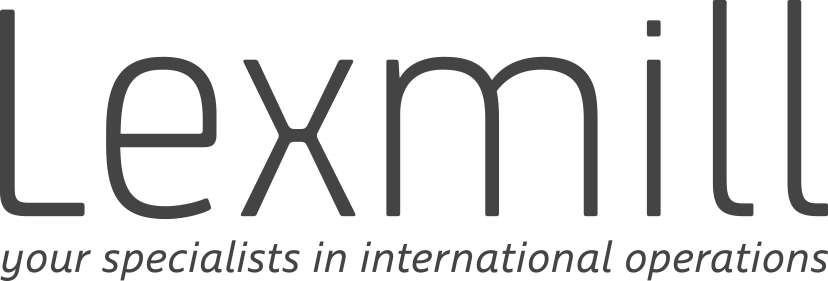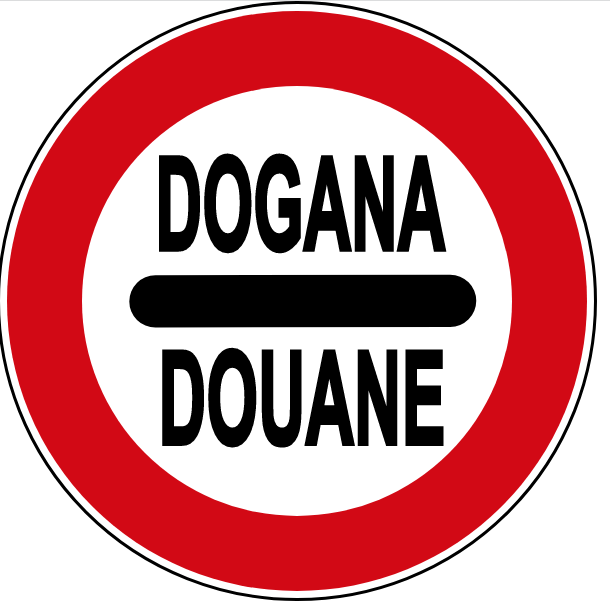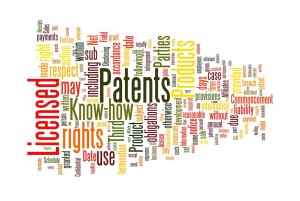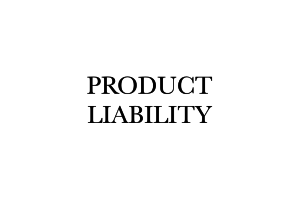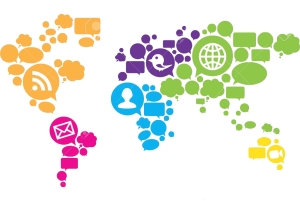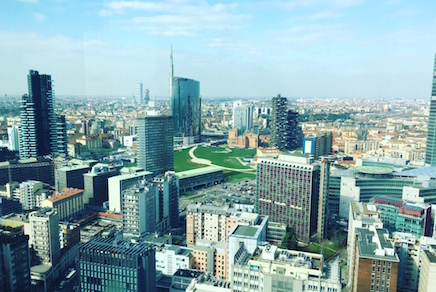ARE YOU A NON-EU ONLINE B2C SUPPLIER WITH EU-BASED CUSTOMERS?
WHY NOT THINKING ABOUT ITALY AS YOUR ONE-STOP PLATFORM?
We are talking about B2C online sales, involving import of goods or services into the EU market – from a non-EU supplier perspective (this now includes, alas, UK-based businesses, NI excluded).
The situation has recently changed as far as VAT is concerned. In fact, new rules came into effect on July 1st, 2021 (enforced in Italy through legislative decree no. 83 of May 25, 2021, available in Off. Gazette of June 15, 2021).
First of all – what’s VAT, and why is it important for non-EU suppliers?
Putting it simple, VAT is a taxation on the added value generated in each passage of the production and distribution chain interesting goods and services. Being basically neutral for intermediaries, VAT ultimately weighs upon the final customer. Largely adopted worldwide (with the notable exception of the United States), VAT is the object of several directives and regulations in the EU. Member States are free to set their own rates, however within given Union limits.
EU “import VAT” is levied upon importation of goods and services into the EU (in addition to customs duties and, if the case may be, excise, antidumping and countervailing duties). The rationale is to put external businesses on equal footing with local producers. Import VAT is generally due to the country of first importation (that is, the Member State where the goods/services can be marketed for the first time within the EU).
Who has to pay import VAT?
… on goods. Unless you decide to deliver DDP, a customer of yours, while placing an order with you for a distance delivery (i.e. providing transportation of goods which are placed outside the EU when they are sold), is going to become an ‘importer’ in the eyes of the EU customs authorities involved. From a practical point of view, most of the time formalities are handled by somebody else (namely the carrier) on his behalf. However, surcharged duties may turn out to be a shocking surprise, especially for low-cost items.
In fact, while a customs duty relief is still in force for goods having an intrinsic value of less than €150 (transport, insurance and handling charges excluded), a VAT relief for consignments under €22 has been removed, effective July 1st, 2021.
From a supplier’s or marketplace’s perspective, this means that VAT is to be added anyway. Worse, this has to be done in a measure varying in accordance with the country of destination (as said above, every EU country may determine its own VAT rates – EU simply sets a minimum). For identifying the correct VAT rate, see here.
In respect of such distance supplies of goods worth less than €150 and not involving excise duties (which apparently constitute the core of e-commerce current trade), a new system has been put in place in order (i) to avoid customer’s surprises, and (ii) to automate the process for the supplier. It’s called I–OSS, Import One-Stop Shop, and it is regulated by EU Directives nos. 2017/2455 and 2019/1995, plus the EU Implementing Regulation no. 2019/2026. A precedent can be found in the MOSS (Mini One-Stop Shop) scheme, active since 2015 for supplies of telecommunication, broadcasting and electronic services.
Under the I-OSS scheme, a non-EU based supplier, or a marketplace (if it is the case – more precisely, “if the sale of goods is facilitated through an electronic interface to buyers in the EU, the electronic interface is considered to have made the sale and is in principle liable for the payment of VAT” – a ‘deemed supplier’), may make recourse to a single portal, to handle all their VAT operations involving import in the EU area. They just need to create a VAT position in just one EU country, through an EU-established intermediary. (However, there’s no need to appoint an intermediary, in case the seller’s country has entered a VAT mutual assistance agreement with the EU – just Norway did so, at the moment).
Through the I-OSS system, VAT collection is moved up to the moment of conclusion of the transaction and goods physically entering the Union can benefit from a green channel. So, the traditional procedure relating to import VAT is no longer necessary, and the importer is just required to identify the right VAT rate in respect of each transaction (this may differ in accordance with the country of final destination, as mentioned) and pay the aggregate amount monthly to the authorities of the country of I-OSS registration – which then takes care of redirecting the VAT due to all the other EU countries.
… on services. Again, VAT is to be paid to the country of first importation (which inevitably coincides with the buyer’s country).
Since July 1st, 2021 a service supplier that is neither EU-resident nor has any permanent establishment in the EU may make recourse to the so called ‘Non-Union OSS’, a scheme rooted in the above-mentioned MOSS (Mini One-Stop Shop), now covering all B2C supplies of services to non-taxable persons in the EU (e.g. transportation services, renovation works on buildings, admission to entertainment or educational events, professional advice and assistance, …), irrespective of their price.
As with the I-OSS scheme above, a non-EU online service supplier may opt for the Non-Union OSS in order to quarterly account for all its VAT due. Again, VAT is to be diversified in accordance with the country where the service is rendered. The supplier will therefore register in just one country (the ‘Member State of identification’) and skip the burden of registering as a VAT provider in every country where its customers are based. There is no need to do so, but it is still possible for the supplier to appoint an EU-based representative (art. 204, Council Directive no. 2006/112/EC).
If you choose to have Italy as the one-stop importation country, please consider that UK companies, notwithstanding that they are now non-EU businesses, are not required to appoint an I-OSS representative (Agenzia delle Entrate, Resolution no. 7/E of February 1st, 2021) (this, however, results in a conflict with the position adopted by the EU Commission; a change of attitude by the Italian authorities may therefore come as no surprise).
Using the I-OSS system is an option. In case a supplier wishes to deliver DDP, he has to VAT-register with each EU country of destination (this amounts to a massive paperwork, of course). In case delivery is DDU and the I-OSS is not viable, the ‘traditional’ rules apply – the customer being considered an importer, as said above. If the value of the consignments is below €150, and they are put into free circulation in the same country of delivery, the customer may be relieved of taking care of the VAT operations, which are made by the carrier or the postal operators, as said above. They may profit from the so-called “special arrangements” in order to simplify their VAT obligations (in particular, having calculation of VAT referring to various items unified at just one rate, making a single cumulative payment, …).
What about the case where customers are served via platforms established in the EU (Amazon-like…)? This requires the supplier to take care of import into the EU by having the goods imported into a given EU country, and then profit from the freedom of movement in order to serve customs-free the customers all over the area.
In that perspective to create, and refill those consignment stocks may easily exceed the €150 threshold. As such, importation of goods intended for the deposit cannot be made under the I-OSS scheme. However, again, a newly established scheme called Union OSS (One-Stop Shop) can be used in order to avoid the burden of VAT registering in each and every EU country where your customers are based (intra-EU operations remain VAT relevant).
A supplier (or a marketplace) can register with the Union OSS scheme, irrespective of the fact that they are EU-based or not. Registration is to be made with one of the OSS portals maintained by every EU Member State. It takes effect form the first quarter following a request submission; however, it can cover interim intra-EU sales as well, provided that a prompt communication (i.e., by the 10th day of the month following the first sale) is given to the authorities of the country of registration.
Registration with OSS is not mandatory, although highly advisable.
Finally, please consider that neither I-OSS, nor OSS schemes allow for offsetting VAT refunds. An operator may recover import VAT, and VAT on purchases in countries where he is not VAT registered, via ordinary recovery procedures only.
If you want to select Italy as your One-Stop-Shop country of reference.
Italy is one of the few countries within the European Union not requiring a separate EC Sales List declaration: as opposed to other countries, such list is integrated into the Intrastat declaration and is therefore filed simultaneously.
Italy is also the only country not to require a threshold for Intrastat (and connected EC Sales list) declarations: they are to be filed regardless of the volumes of arrivals or dispatches of goods and services (by the 15th of the month following the report period), thus avoiding the need to keep such volumes under surveillance.
In conclusion,
from a non-EU online supplier’s perspective aiming to serve EU consumers (provided that almost all goods and services will be charged with VAT at the customer’s country rate):
-
if you employ a marketplace such as Amazon and the likes: the marketplace (as in general any electronic interface that is somehow involved actively in the supply – i.e. which does not limit itself to advertising your products, or redirecting customers to your website) will be deemed the seller in lieu of you (the ‘underlying supplier’). In principle, you have nothing to do, from a practical point of view, regarding EU VAT, unless you give your marketplace misleading information (e.g. a country of destination instead of another). However, an EU Member State may set the rule that an underlying supplier is jointly and severally liable along with the deemed supplier (art. 205, Council Directive no. 2006/112/EC).
-
in case you don’t employ a marketplace and if you supply your customers…
-
… with services only: to (digitally) register with a Non-Union scheme appears advisable. It’ll concentrate all your paperwork in one country. You may choose any EU Member State to that purpose.
-
… with goods (not subject to excises), in consignments having a facial value of €150 or less, you might want to register with the I-OSS scheme. Again, this will allow you to exploit the VAT one-stop system, by registering with whichever EU country you prefer. As an alternative, you can use your carrier to collect VAT at destination.
-
… with goods, out of the previous case. Goods are subject to customs duties, as well as VAT. You may opt for supplying either DDU, or DDP . In both cases, the most common solution – unless you have your own organization on site – is to have your carrier to undertake the clearing operations on the customer’s or your behalf & cost, respectively. A variant is to serve your customers from inside the EU (typically from a warehouse managed by you, or a contractor): in order to ease your intra-EU transactions, recourse to the Union scheme seems advisable. Apart from facilitating the handling of VAT formalities, and return payments, this will prevent you from being obliged to register in every EU country where your customers reside. Being a non-EU business, you’ll be bound to it regardless of whether the annual €10,000 threshold providing exemption from the place-of-supply rule is exceeded or not.
-
… with services AND goods: you have to register with different schemes, if you choose to take that opportunity. Namely the Non-union OSS and the I-OSS, or the Union OSS, or all three schemes.
…
